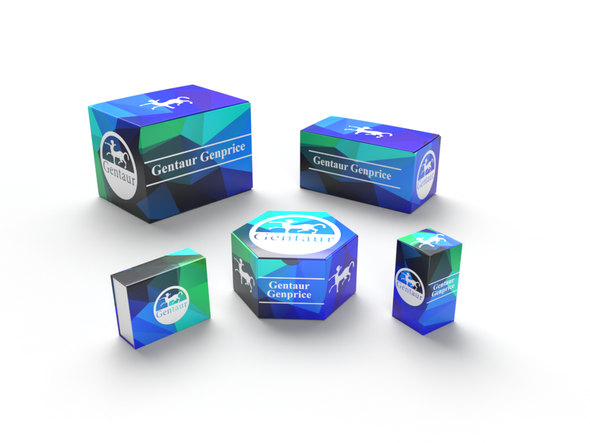Description
BMP15 Antibody | 4739 | Gentaur UK, US & Europe Distribution
Host: Rabbit
Reactivity: Human
Homology: Predicted species reactivity based on immunogen sequence: Mouse: (89%) , Sheep: (83%) , Bovine: (83%)
Immunogen: Rabbit polyclonal BMP15 antibody was raised against an 18 amino acid peptide near the amino terminus of human BMP15.
The immunogen is located within amino acids 60 - 110 of BMP15.
Research Area: Stem Cell
Tested Application: E, IHC-P
Application: BMP15 antibody can be used for detection of BMP15 by Western blot at 1 - 2 μg/mL.
Antibody validated: Immunohistochemistry in human samples. All other applications and species not yet tested.
Specificiy: N/A
Positive Control 1: Cat. No. 10-635 - Human Prostate Tissue Slide
Positive Control 2: N/A
Positive Control 3: N/A
Positive Control 4: N/A
Positive Control 5: N/A
Positive Control 6: N/A
Molecular Weight: 43 kDa
Validation: N/A
Isoform: N/A
Purification: BMP15 Antibody is affinity chromatography purified via peptide column.
Clonality: Polyclonal
Clone: N/A
Isotype: IgG
Conjugate: Unconjugated
Physical State: Liquid
Buffer: BMP15 Antibody is supplied in PBS containing 0.02% sodium azide.
Concentration: 1 mg/mL
Storage Condition: BMP15 antibody can be stored at 4˚C for three months and -20˚C, stable for up to one year.
Alternate Name: BMP15 Antibody: ODG2, POF4, GDF9B, Bone morphogenetic protein 15, BMP-15
User Note: Optimal dilutions for each application to be determined by the researcher.
BACKGROUND: BMP15 Antibody: BMP15, or GDF9B is a member of the bone morphogenetic protein family which is part of the transforming growth factor-beta superfamily that are involved in embryonic development and adult tissue homeostasis. BMP15 is expressed exclusively in the oocyte. It is an oocyte-specific growth/differentiation factor that may be involved in oocyte maturation and follicular development. Defects in BMP15 are the cause of ovarian dysgenesis type 2. BMP15 could be used as an oogenesis marker to track human amniotic fluid stem cells differentiation into the oocyte-like cells.








![BMP15 Antibody [APR33557G] BMP15 Antibody [APR33557G]](https://cdn11.bigcommerce.com/s-1rdwiq712m/images/stencil/590x590/products/64700/65004/gentaur-genprice__26005.1661610467__29809.1661628092__75433.1661676199__77988.1661684280__64362.1661692443__92636.1661876740.png?c=1)

